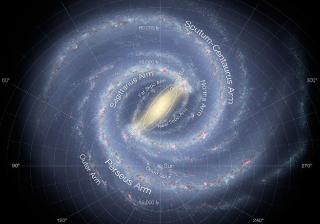Bibcode
Wang, H. -F.; López-Corredoira, M.; Huang, Y.; Chang, J.; Zhang, H. -W.; Carlin, J. L.; Chen, X. -D.; Chrobáková, Ž.; Chen, B. -Q.
Bibliographical reference
The Astrophysical Journal
Advertised on:
7
2020
Journal
Citations
45
Refereed citations
43
Description
By combining LAMOST DR4 and Gaia DR2 common red clump stars with age and proper motion, we analyze the amplitude evolution of the stellar warp independently of any assumption with a simple model. The greatest height of the warp disk increases with galactocentric distance in different populations and is dependent on age: the younger stellar populations exhibit stronger warp features than the old ones, accompanied by the warp amplitude γ (age) decreasing with age, and its first derivative $\dot{\gamma }(\mathrm{age})$ is different from zero. The azimuth of the line of nodes φw is stable at −5° without clear time evolution, which perfectly confirms some previous works. All of this self-consistent evidence supports that our Galactic warp should most likely be a long-lived but nonsteady structure and not a transient one, which is supporting that the warp originated from gas infall onto the disk or other hypotheses that suppose that the warp mainly affects the gas, and consequently, younger populations tracing the gas are stronger than older ones. In other words, the Galactic warp is induced by the nongravitational interaction over the disk models.
Related projects

Morphology and dynamics of the Milky Way
This project consists of two parts, each differentiated but both complementary: morphology and dynamics. Detailed study of the morphology of the Milky Way pretends to provide a data base for the stellar distribution in the most remote and heavily obscured regions of our Galaxy, through the development of semiempirical models based on the
Martín
López Corredoira